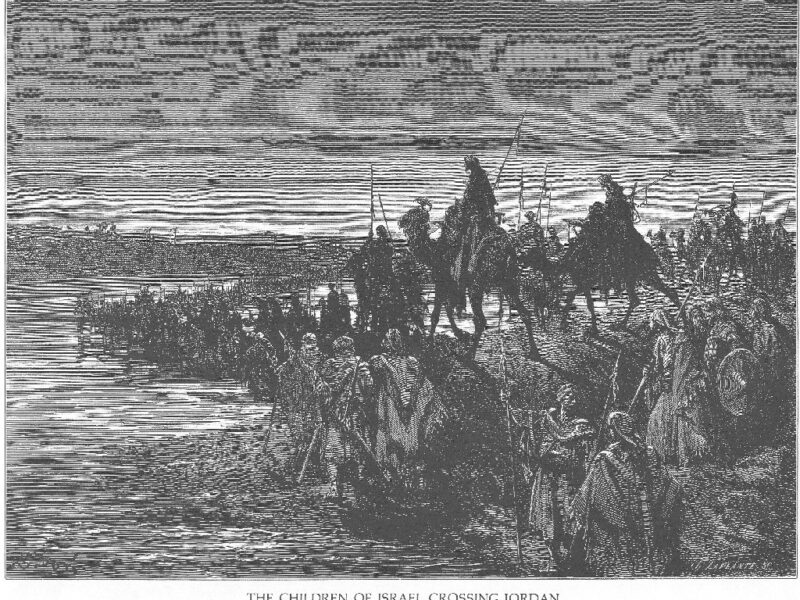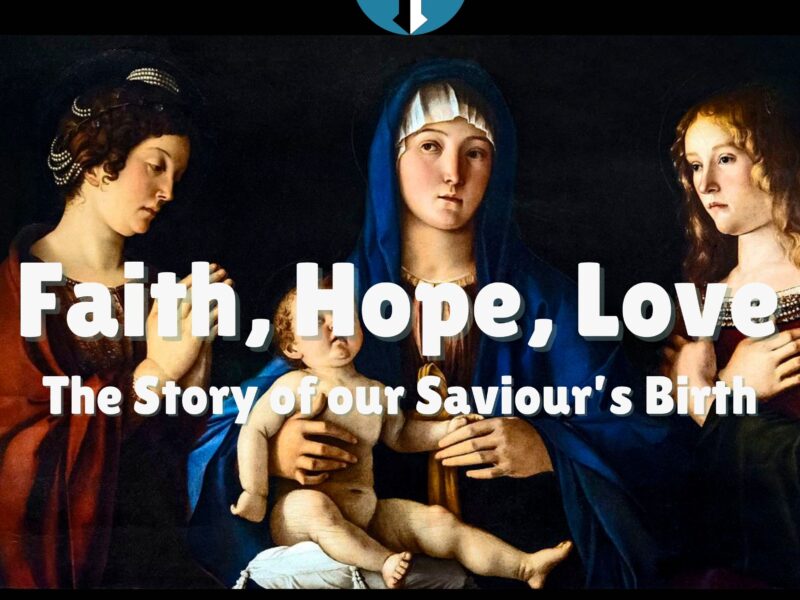
Quodlibet 3 – InChristation
1.1k
Yet another Quodlibet! Answer provided by Br. Gregory Murphy
Did Jesus have to die to save us? I think that the key to trying to understand this mystery is to grasp that the fact that Jesus was put to death perhaps tells us more about ourselves than it does about God. Jesus showed us the human face of God, the human face of self-sacrificing love. But to love this way is to risk, to lay yourself open to the needs of others, to become vulnerable to them. And in the fallen human world of violence and corrupted relationships, of sin, this leads to the cross. Jesus was God’s gift of himself as man to humans; humans rejected this gift, and killed him. But the last word in that particular dialogue was God’s, in the Resurrection. Now, with Jesus living, risen, we are in communion, in one Body with him through the Spirit. But it wasn’t Jesus’ suffering as suffering that saves us; God isn’t like a severe judge, demanding reparation and issuing punishments. We could think of the Incarnation as the image of God projected onto human history. And our sinful history has distorted that image, producing the image of the cross. But God takes up and transforms the evil we have done in the Resurrection and inasmuch as we share in the life of the risen Lord we too ultimately escape death by being caught up into God’s life.
understand this mystery is to grasp that the fact that Jesus was put to death perhaps tells us more about ourselves than it does about God. Jesus showed us the human face of God, the human face of self-sacrificing love. But to love this way is to risk, to lay yourself open to the needs of others, to become vulnerable to them. And in the fallen human world of violence and corrupted relationships, of sin, this leads to the cross. Jesus was God’s gift of himself as man to humans; humans rejected this gift, and killed him. But the last word in that particular dialogue was God’s, in the Resurrection. Now, with Jesus living, risen, we are in communion, in one Body with him through the Spirit. But it wasn’t Jesus’ suffering as suffering that saves us; God isn’t like a severe judge, demanding reparation and issuing punishments. We could think of the Incarnation as the image of God projected onto human history. And our sinful history has distorted that image, producing the image of the cross. But God takes up and transforms the evil we have done in the Resurrection and inasmuch as we share in the life of the risen Lord we too ultimately escape death by being caught up into God’s life.
Question:
InChristation is the other side of Incarnation. God became man so that man might become God. By dying on the cross, God opened the gates of eternity to mankind. Christ showed that the entry to Paradise was accomplished through suffering and that no one enters Paradise alone. That is why we can make reparation for the sins of others.
Is this thinking naive? Heretical? Stupid? Or is it an opening to a better understanding of the mysteries of our faith?
Answer:
I think the latter – an opening to a better understanding. ‘InChristation’ (I rather like this neologism (in English at least)) is rather like the other side of the Incarnation, in the sense of the reverse side of a coin, in that by God (or more precisely God’s Word) becoming human, humans can now come to accept the gift extended to us from God of sharing in God’s life. This is the core of what we mean by ‘salvation’, and it happens in Baptism, when we become incorporated into the Body of Christ, becoming adopted sons in the Son. Of course we then have to realise it (to make it real) in our lives, slowly to learn what demands our trying to keep company with God, to walk in his ways, will make on us, what it might let us become, if we will only cooperate.
That’s where the talk of our divinisation comes from: ‘God became man that man might become (as) God’ – a slogan which has endured from Patristic times to the present, taken from a free rendering of some verses of the psalms. We become divinised, through God’s gift of his Spirit enlikened to God, sufficiently to be able to enjoy his life with Him; but we do not thereby become divine. We become like God, enough, we hope, to see him not “now as in a mirror, dimly, but then face-to-face” (1Cor 13:12); but we do not become God.
Did Jesus have to die to save us? I think that the key to trying to
 understand this mystery is to grasp that the fact that Jesus was put to death perhaps tells us more about ourselves than it does about God. Jesus showed us the human face of God, the human face of self-sacrificing love. But to love this way is to risk, to lay yourself open to the needs of others, to become vulnerable to them. And in the fallen human world of violence and corrupted relationships, of sin, this leads to the cross. Jesus was God’s gift of himself as man to humans; humans rejected this gift, and killed him. But the last word in that particular dialogue was God’s, in the Resurrection. Now, with Jesus living, risen, we are in communion, in one Body with him through the Spirit. But it wasn’t Jesus’ suffering as suffering that saves us; God isn’t like a severe judge, demanding reparation and issuing punishments. We could think of the Incarnation as the image of God projected onto human history. And our sinful history has distorted that image, producing the image of the cross. But God takes up and transforms the evil we have done in the Resurrection and inasmuch as we share in the life of the risen Lord we too ultimately escape death by being caught up into God’s life.
understand this mystery is to grasp that the fact that Jesus was put to death perhaps tells us more about ourselves than it does about God. Jesus showed us the human face of God, the human face of self-sacrificing love. But to love this way is to risk, to lay yourself open to the needs of others, to become vulnerable to them. And in the fallen human world of violence and corrupted relationships, of sin, this leads to the cross. Jesus was God’s gift of himself as man to humans; humans rejected this gift, and killed him. But the last word in that particular dialogue was God’s, in the Resurrection. Now, with Jesus living, risen, we are in communion, in one Body with him through the Spirit. But it wasn’t Jesus’ suffering as suffering that saves us; God isn’t like a severe judge, demanding reparation and issuing punishments. We could think of the Incarnation as the image of God projected onto human history. And our sinful history has distorted that image, producing the image of the cross. But God takes up and transforms the evil we have done in the Resurrection and inasmuch as we share in the life of the risen Lord we too ultimately escape death by being caught up into God’s life.
One of the ways we realise the presence of God’s love and life in us is in compassion, our ‘feeling-with’ the suffering of others. And as we are being built up by the Spirit into the one Body of Christ we are being bound together in one fellowship or communion. So, in a sense we save ourselves – by letting ourselves become able to accept God’s love in Christ by serving others, so in that sense we don’t enter paradise, life with God, alone. As one of my brothers noted recently, when we die we usually leave all sorts of unfinished business behind us. But our time for action is in this life. So we hope that people still living will offer prayers and beseech God’s mercy for us, and by their charity help to undo the damage we have left in our passage through this life. That, I think, is how I understand ‘reparation’, and praying on behalf of the dead; as those in bliss, the saints, pray for us. Both living and dead (as human history sees it) are part of the one, living body of the risen Lord.
Body of Christ we are being bound together in one fellowship or communion. So, in a sense we save ourselves – by letting ourselves become able to accept God’s love in Christ by serving others, so in that sense we don’t enter paradise, life with God, alone. As one of my brothers noted recently, when we die we usually leave all sorts of unfinished business behind us. But our time for action is in this life. So we hope that people still living will offer prayers and beseech God’s mercy for us, and by their charity help to undo the damage we have left in our passage through this life. That, I think, is how I understand ‘reparation’, and praying on behalf of the dead; as those in bliss, the saints, pray for us. Both living and dead (as human history sees it) are part of the one, living body of the risen Lord.
 Body of Christ we are being bound together in one fellowship or communion. So, in a sense we save ourselves – by letting ourselves become able to accept God’s love in Christ by serving others, so in that sense we don’t enter paradise, life with God, alone. As one of my brothers noted recently, when we die we usually leave all sorts of unfinished business behind us. But our time for action is in this life. So we hope that people still living will offer prayers and beseech God’s mercy for us, and by their charity help to undo the damage we have left in our passage through this life. That, I think, is how I understand ‘reparation’, and praying on behalf of the dead; as those in bliss, the saints, pray for us. Both living and dead (as human history sees it) are part of the one, living body of the risen Lord.
Body of Christ we are being bound together in one fellowship or communion. So, in a sense we save ourselves – by letting ourselves become able to accept God’s love in Christ by serving others, so in that sense we don’t enter paradise, life with God, alone. As one of my brothers noted recently, when we die we usually leave all sorts of unfinished business behind us. But our time for action is in this life. So we hope that people still living will offer prayers and beseech God’s mercy for us, and by their charity help to undo the damage we have left in our passage through this life. That, I think, is how I understand ‘reparation’, and praying on behalf of the dead; as those in bliss, the saints, pray for us. Both living and dead (as human history sees it) are part of the one, living body of the risen Lord.


